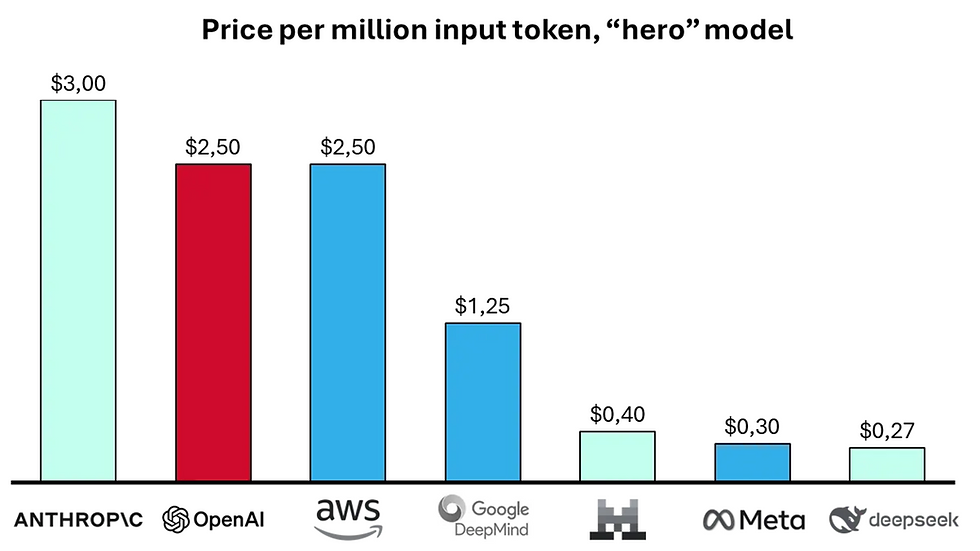What Can Chinese E-Commerce Teach Us About The Future Of Retail?
- Adrien Book

- Aug 31, 2018
- 5 min read
Updated: Dec 31, 2022
The retail world is currently dealing with a significant amount of change. Amazon, mobile, A.I… there are dozens of new threats, technologies and processes a strategy executive must keep in mind to stay ahead of the curve when faced with skydiving sales. Yet, said executives tend to be far too West-focused when benchmarking (stealing ideas) and brainstorming (panicking). Unbeknownst to them, U.S. and European companies are being seriously out-smarted by China’s tech companies integrating physical stores with e-commerce to pull retail businesses into their unique corporate universes. This disruption is not to be taken lightly given the current inertia within the industry.
These Chinese companies are often known by name but few know just how large and powerful they have become in e-commerce, gaming, messaging, fintech and yes, brick-and-mortar retailing.
Below are a few of their most recent forays into the $25T worldwide retail universe.
Alibaba 101
For many of us, Alibaba is the website where we go buy cheap junk when we don’t mind waiting for a couple of weeks longer than if we’d ordered on Amazon. This is however not how the giant sees itself: Alibaba currently operates in over 200 countries, is technically the largest retailer, one of the largest Cloud and A.I company, one of the biggest venture capital firm, and one of the biggest investment corporation in the world. The company operates 5 e-commerce and retail service platforms (including Alibaba.com), owns 3 cloud computing and A.I technology businesses, and controls more than half of the Chinese online payment market through Alipay. Furthermore, its media empire is rising by triple percentage points year on year, while its messaging, health, software and sports businesses are doing rather well to say the least.
Metro, Walmart, Tesco and Carrefour are however not losing much sleep over this. What they worry (or should worry) about is the company’s foray into analogue retail.
Alibaba’s retail efforts
Alibaba has spent $10 billion on traditional retailers since 2016, and has been conducting unholy retail experiments on their corpses ever since. The result of this work is Alibaba’s “new retail” technology, an off-the-shelf, “digitalisation-in-a-box” concept which small retailers can easily understand and implement. It offers a set of digitalisation tools (SEO, website design, mobile optimisation…), syncs online and offline operations, optimises in-store layout, improves inventory and supply chain management, provides customer insights, and grants access to electronic payments via Alipay.
It’s also cheap enough to be attractive to a large market: $6,000 to $7,500 for store renovations, about $620 a year to be a “super-member” of the program, and the obligation to purchase a small share of inventory from the Alibaba platform. What does Alibaba gain from this? New, loyal and recurrent Alipay and Alibaba customers and sweet, sweet data for its A.I businesses, as well as valuable insights for its retail subsidiaries. All this while making a very nice margin and competing with its main rival, Tencent.
How’s that for adjacency, strategy 101 students?
The company is also experimenting with its own smart stores. One is a concept store called “FashionAI”, which has AR mirrors connected to the shelves for virtual try-outs, personnalised suggestions based on facial recognition and automated fitting rooms where the product waits for the customers once a choice is made on the mirrors. Mobile payment is also used, and one may shop without seeing a single employee, safe in the knowledge that every products picked up will be remembered in the online store. The temporary project was co-sponsored by Guess, and a national roll-out appears imminent.
Alibaba has also used its famous “singles’ day” (Ikr, why don’t we have that here?) event to test-run varied technologies in 60 pop-up stores, in partnership with more than 100 brands:
Alipay scanned to enter stores, items scanned via mobile and automatic payment when walking out
Electronic price tags and prices varying in real time based on certain factors
Facial recognition technology used to track customers, and discounts offered on items they smile at or that they have searched for online
Home delivery details don’t need to be given as the system already has the purchaser’s home address on record
Customers can scan images using AR technology to visit product listing page and collect coupons
AR mobile gamification to earn coupons
Rewards for posting on social media about brands
…
Need I go on?
…
Seriously, Tesco and Carrefour, I hope you’re taking notes
In order to bank on the success of its experiments, Alibaba is also planning on opening two thousand grocery stores as part of its Hema Xiansheng chain in the next three to five years.
But wait, there’s more!
JD.com 101
Alibaba’s not the only trailblazer, though it is by far the largest. JD.com is also revolutionising retail in its own way with its “Unbounded Retail” (无界零售 (?)) concept, which merges e-commerce with social networks. Though its game is strictly B2C, JD boasts an impressive 301.8 million active users, and is bankrolled by Google, Walmart and gaming-and-social-media giant Tencent (20%), all of which have mountains of data to use and test in a retal environment.
In many ways, and though it’s ten times smaller than its American cousin, JD.com is what Amazon wants to become when it grows up, especially when we look beyond social media and into its robotics efforts. Since March 2016, its drones have been delivering products across China, having clocked over 5 000 hours of flight time. Furthermore, it’s not only making and using them, it’s also selling them for a hefty profit. Drones that can carry several thousand tons to transfer inventory from one warehouse to another, coming and going in between small airports near the warehouses, are also being planned.
Its other claim to fame is its warehouse robotics program: a JD.com warehouse can ship 200,000 packages a day with just four human workers, all of them robot mechanics. This helps JD deliver almost all of its packages the same day, and more than half within 12 hours (residents of large cities can count on 30 mn delivery).
JD.com’s retail efforts
JD is also going very much offline in the near future: it plans to open 1,000 restaurants fully operated by robots by 2020, recently announced its ambition to create a store chain without cash registers in China (which would co-exist alongside the high-tech 7Fresh supermarket chain that JD.com launched late last year) and aims to open one million (not a typo) convenience franchisees within the next few years. It’s also broken a market Amazon never could: luxury with its Toplife line.
Of course, both JD and Alibaba have outside help on their way to retail hegemony. They very much do business with the state’s blessing, which has implemented a very thorough A.I implementation plan across various industries. Furthermore, Chinese users are less fond of their privacy (or more accustomed to violations), allowing for a wider set of ideas being tested. This should however not be an excuse for bad strategy from Western retailers.
Below are 5 rules they should immediately implement to survive:
Customer impact and technology enablement: every strategic moves should have these two points at their heart.
Be pragmatic: seperate PR from ROI, yet nurture continue to nurture both.
Collaborate: if you can’t beat them (hint: you can’t beat them), join them.
Create core competencies that yield a real competitive advantage in the long run.
Everyone needs to be digital: one token team just won’t do
Either, way, more money for strategy consultants.
Yay.



























Wow, this is mind-blowing! The way Chinese e-commerce like Alibaba are innovating in retail is insane. Makes you wonder if traditional retailers are ready for this level of disruption. Feels like we're watching a whole new ballgame unfold, almost like watching blue lock rivals compete!
Article passionnant sur l’évolution du e-commerce en Chine ! Pour les marques souhaitant s’inspirer de ces modèles et renforcer leur visibilité en ligne, une stratégie de référencement SEO bien conçue est essentielle. Elle permet d’attirer un public qualifié et de consolider sa présence sur les moteurs de recherche.
L’expérience utilisateur est au cœur de l’ADN de Vapeol. Chaque e-liquide est testé et perfectionné pour garantir une satisfaction maximale, offrant une vapeur douce et agréable tout au long de la journée.
무료카지노 무료카지노;
무료카지노 무료카지노;
google 优化 seo技术+jingcheng-seo.com+秒收录;
Fortune Tiger Fortune Tiger;
Fortune Tiger Fortune Tiger;
Fortune Tiger Slots Fortune…
站群/ 站群
gamesimes gamesimes;
03topgame 03topgame
EPS Machine EPS Cutting…
EPS Machine EPS and…
EPP Machine EPP Shape…
Fortune Tiger Fortune Tiger;
EPS Machine EPS and…
betwin betwin;
777 777;
slots slots;
Fortune Tiger Fortune Tiger;
谷歌seo推广 游戏出海seo,引流,快排,蜘蛛池租售;
Fortune Tiger Fortune Tiger;
Fortune Tiger Fortune Tiger;
Fortune Tiger Fortune Tiger;
Fortune Tiger Fortune Tiger;
Fortune Tiger Slots Fortune Tiger Slots;